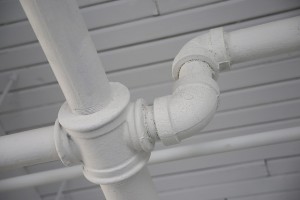 Pipe vs. Tube
Pipe vs. Tube
A pipe or a tube is often interchangeably mixed when used to describe a long cylinder. However, there are minute differences between the two, which can determine whether one is appropriate to use over the other. A pipe and a tube are both hollow cylinders which are used to pass liquids through, carry small solids or powders. Both are created to be rigid and permanent contributions from an engineering standpoint. When pipes are made, they are typically set around certain sets of measurements and diameters, as opposed to a tube which can be made on varying measurements. This is one of the few differences between a pipe and a tube.
Pipes and tubes are used for transporting various gases and liquids, in water systems and steel structures. Tubes and pipes can be made of many items depending on what they will be used for; there are metal, plastic, fiberglass and even copper tubing and pipes. Pipes and tubes made from aluminum are ideal for transporting heat, copper tubes are typically used in residential plumbing unless the home is older the pipes or tubes could be made of lead. Plastic tubes and pipes are made of polyvinyl chloride (PVC). PVC is one of the most widely used building materials; it is used in water systems across the country. These plastic pipes and tubes are used in drinking water systems and waste-water systems.
In order to create a system of channels, pipes and tubes are created by welding the ends together or using a compression fitting. When creating a pipe, there are various ways of determining the outside diameter. In the United States it is called the Nominal Pipe Size. Manufacturers are able to obtain all dimensions of a pipe or tube by measuring the outside diameter and the thickness. Subtracting the thickness of the tube or pipe from the outside diameter will give the Nominal Pipe Size. Depending on the material of the pipe, there are also other methods of determining its measurements.
Pipes and tubes, prior to their implementation in engineering, must meet certain standards. These tests ensure that pipes are able to carry certain amounts of pressure, certain temperatures of water and certain amounts of hydrogen. Additionally the pipes and tubes are certifiably authorized for use in commercial and residential buildings.
Tubes and pipes are similar almost in every way. The minimal differences are not enough to distinguish between the two, unless you are an engineer working with either of the two items.
Summary
- A pipe and a tube are, by definition, both hollow cylinders used to pass liquids through them.
- The measurements for pipes are based around standard diameters and thicknesses. Tubes vary in both thickness and diameter.
- Using the Nominal Pipe sizing method will give all the dimensions of any given pipe or tube.
- Pipes and tubes can be made of plastic, ceramic, aluminum and many other sturdy items.
- Each pipe and tube that are used for engineering purposes are certified and checked for stability and any other problems.
- Difference between Ego and Attitude - February 19, 2018
- Difference Between Cavalier King Charles Spaniel and King Charles Spaniel - April 10, 2011
- Difference Between Eastern Religions and Western Religions - April 10, 2011

it is very useful
Reply
The Main Difference Between Pipe and Tube is as follows:
Pipe is for mass transfer applications, whereas, tube is for heat transfer applications.
Due to this fundamental difference, we generally call pipe and tube as: water pipes, steam pipes, slurry pipes, boiler tubes, heat exchanger tubes, radiator tubes, etc.
Reply
Why is the symbol “” at the beginning of each sentence in this article?
Reply
The response from Nori VSN Murthy is valuable and valid in common written and oral communication in the various technical disciplines. However, the “mass-transfer” purpose also applies to SOME “tubing” for which the materials is typically of small inner diameter (e.g., 0.05 to 0.25 inches) term for small diameter, and flexible (sometimes transparent or semi-transparent) A residential example is the “tubing” that supplies water to an ice-maker component of a kitchen refrigerator/freezer appliance. “Tubing” is used for withdrawing blood for analysis. In bench-scale research laboratories “tubing” is used for transfer of cooling water in an either flow-through or (more economically) a closed-loop system. “Tubing” of small diameter is often connected to a blunt-end needle that is connected to a laboratory syringe. Small diameter flexible “tubing” is often used to control small pressure difference (or equalization) between vessels containing a liquid and a gas (air or a “reagent” gas). In laboratory lexicon, glass “tubing” is typically used to fabricate apparatus (sometimes with torch heating for bending and forming attachments) while glass “piping” is installed by engineers for waste drainage – highly resistant to corrosion; high visibility of obstructions that sometimes enter via laboratory sinks. For some types of laboratory analysis, a gas (or liquid) is tranferred from a pressurized tank (or liquid pump) to an analytical device via stainless steel “tubing” that is characterized by a large ratio of outer diameter to inner diameter, thus allowing flexibility so that same segment of tubing may be used for a short distance mass transfer (with coiling the excess), or a longer distance mass transfer. The inner diameters are typically fabricated with a high degree of precision.
Reply